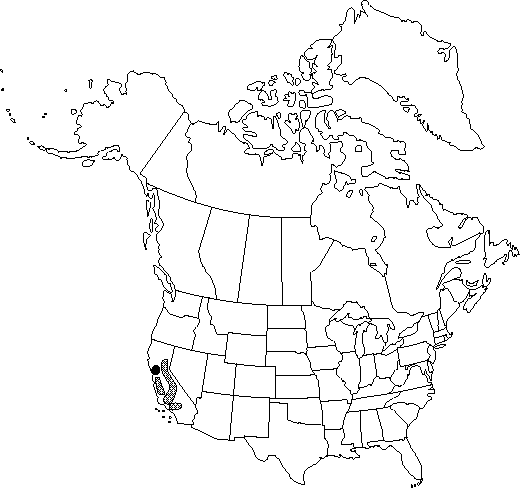FNA>Volume Importer |
FNA>Volume Importer |
| Line 27: |
Line 27: |
| | }}<!-- | | }}<!-- |
| | | | |
| − | --><span class="statement" id="st-d0_s0" data-properties="stem some measurement;stem growth form;stem architecture"><b>Stems </b>10-40 cm, cespitose, not rhizomatous;</span> <span class="statement" id="st-d0_s1" data-properties="root architecture">roots tuberous.</span> <span class="statement" id="st-d0_s2" data-properties="leaf pubescence"><b>Leaves </b>abaxially glabrous;</span> <span class="statement" id="st-d0_s3" data-properties="leaflet shape;secondary lobe quantity">leaflets irregularly 2-3-lobed, lobes often with 1-3 secondary lobes;</span> <span class="statement" id="st-d0_s4" data-properties="apex shape;apex architecture or shape">apex rounded, glandular-apiculate.</span> <span class="statement" id="st-d0_s5" data-properties="inflorescence position;flower arrangement;flower arrangement;cyme architecture;cyme architecture"><b>Inflorescences </b>axillary, flowers solitary or loosely grouped in 2-3-flowered leafy cymes;</span> <span class="statement" id="st-d0_s6" data-properties="peduncle shape">peduncle not strongly clavate.</span> <span class="statement" id="st-d0_s7" data-properties="sepal atypical length;sepal length;sepal width"><b>Flowers:</b> sepals (5-) 7-11.5 × 2.8-7 mm;</span> <span class="statement" id="st-d0_s8" data-properties="stamen quantity">stamens 20-40;</span> <span class="statement" id="st-d0_s9" data-properties="filament shape;filament shape;filament shape;filament some measurement">filaments filiform to club-shaped, 2.2-6 mm.</span> <span class="statement" id="st-d0_s10" data-properties="follicle architecture;follicle orientation;follicle arrangement"><b>Follicles </b>sessile, upright to widely divergent;</span> <span class="statement" id="st-d0_s11" data-properties="body shape;body atypical some measurement;body some measurement;body condition or size">body oblong, (7.7-) 8.5-11.5 mm, abruptly contracted into style beak;</span> <span class="statement" id="st-d0_s12" data-properties="beak some measurement">beak 0.8-1.7 mm.</span> <span class="statement" id="st-d0_s13" data-properties="seed some measurement;seed pubescence"><b>Seeds </b>1.5-2 mm, glabrous.</span><!-- | + | --><span class="statement" id="st-undefined" data-properties=""><b>Stems </b>10-40 cm, cespitose, not rhizomatous; roots tuberous. <b>Leaves</b> abaxially glabrous; leaflets irregularly 2-3-lobed, lobes often with 1-3 secondary lobes; apex rounded, glandular-apiculate. <b>Inflorescences</b> axillary, flowers solitary or loosely grouped in 2-3-flowered leafy cymes; peduncle not strongly clavate. <b>Flowers</b>: sepals (5-)7-11.5 × 2.8-7 mm; stamens 20-40; filaments filiform to club-shaped, 2.2-6 mm. <b>Follicles</b> sessile, upright to widely divergent; body oblong, (7.7-)8.5-11.5 mm, abruptly contracted into style beak; beak 0.8-1.7 mm. <b>Seeds</b> 1.5-2 mm, glabrous.</span><!-- |
| | | | |
| | -->{{Treatment/Body | | -->{{Treatment/Body |
| Line 58: |
Line 58: |
| | |publication year=1920 | | |publication year=1920 |
| | |special status=Endemic;Selected by author to be illustrated | | |special status=Endemic;Selected by author to be illustrated |
| − | |source xml=https://jpend@bitbucket.org/aafc-mbb/fna-fine-grained-xml.git/src/287ef3db526bd807d435a3c7423ef2df1e951227/V3/V3_294.xml | + | |source xml=https://jpend@bitbucket.org/aafc-mbb/fna-data-curation.git/src/9216fc802291cd3df363fd52122300479582ede7/coarse_grained_fna_xml/V3/V3_294.xml |
| | |genus=Enemion | | |genus=Enemion |
| | |species=Enemion occidentale | | |species=Enemion occidentale |
| − | |apex architecture or shape=glandular-apiculate
| |
| − | |apex shape=rounded
| |
| − | |beak some measurement=0.8mm;1.7mm
| |
| − | |body atypical some measurement=7.7mm;8.5mm
| |
| − | |body condition or size=contracted
| |
| − | |body shape=oblong
| |
| − | |body some measurement=8.5mm;11.5mm
| |
| − | |cyme architecture=leafy;2-3-flowered
| |
| − | |filament shape=filiform;club-shaped
| |
| − | |filament some measurement=2.2mm;6mm
| |
| − | |flower arrangement=grouped;solitary
| |
| − | |follicle architecture=sessile
| |
| − | |follicle arrangement=divergent
| |
| − | |follicle orientation=upright
| |
| − | |inflorescence position=axillary
| |
| − | |leaf pubescence=glabrous
| |
| − | |leaflet shape=2-3-lobed
| |
| − | |peduncle shape=clavate
| |
| − | |root architecture=tuberous
| |
| − | |secondary lobe quantity=1;3
| |
| − | |seed pubescence=glabrous
| |
| − | |seed some measurement=1.5mm;2mm
| |
| − | |sepal atypical length=5mm;7mm
| |
| − | |sepal length=7mm;11.5mm
| |
| − | |sepal width=2.8mm;7mm
| |
| − | |stamen quantity=20;40
| |
| − | |stem architecture=not rhizomatous
| |
| − | |stem growth form=cespitose
| |
| − | |stem some measurement=10cm;40cm
| |
| | }}<!-- | | }}<!-- |
| | | | |
| | -->[[Category:Treatment]][[Category:Enemion]] | | -->[[Category:Treatment]][[Category:Enemion]] |
Stems 10-40 cm, cespitose, not rhizomatous; roots tuberous. Leaves abaxially glabrous; leaflets irregularly 2-3-lobed, lobes often with 1-3 secondary lobes; apex rounded, glandular-apiculate. Inflorescences axillary, flowers solitary or loosely grouped in 2-3-flowered leafy cymes; peduncle not strongly clavate. Flowers: sepals (5-)7-11.5 × 2.8-7 mm; stamens 20-40; filaments filiform to club-shaped, 2.2-6 mm. Follicles sessile, upright to widely divergent; body oblong, (7.7-)8.5-11.5 mm, abruptly contracted into style beak; beak 0.8-1.7 mm. Seeds 1.5-2 mm, glabrous.
Phenology: Flowering early spring.
Habitat: Shaded places, oak woodland, chaparral, and coniferous and deciduous woods
Elevation: 200-1500 m
Discussion
Enemion occidentale is endemic to California where it is infrequent and local (P. A. Munz 1959).
Selected References
None.

